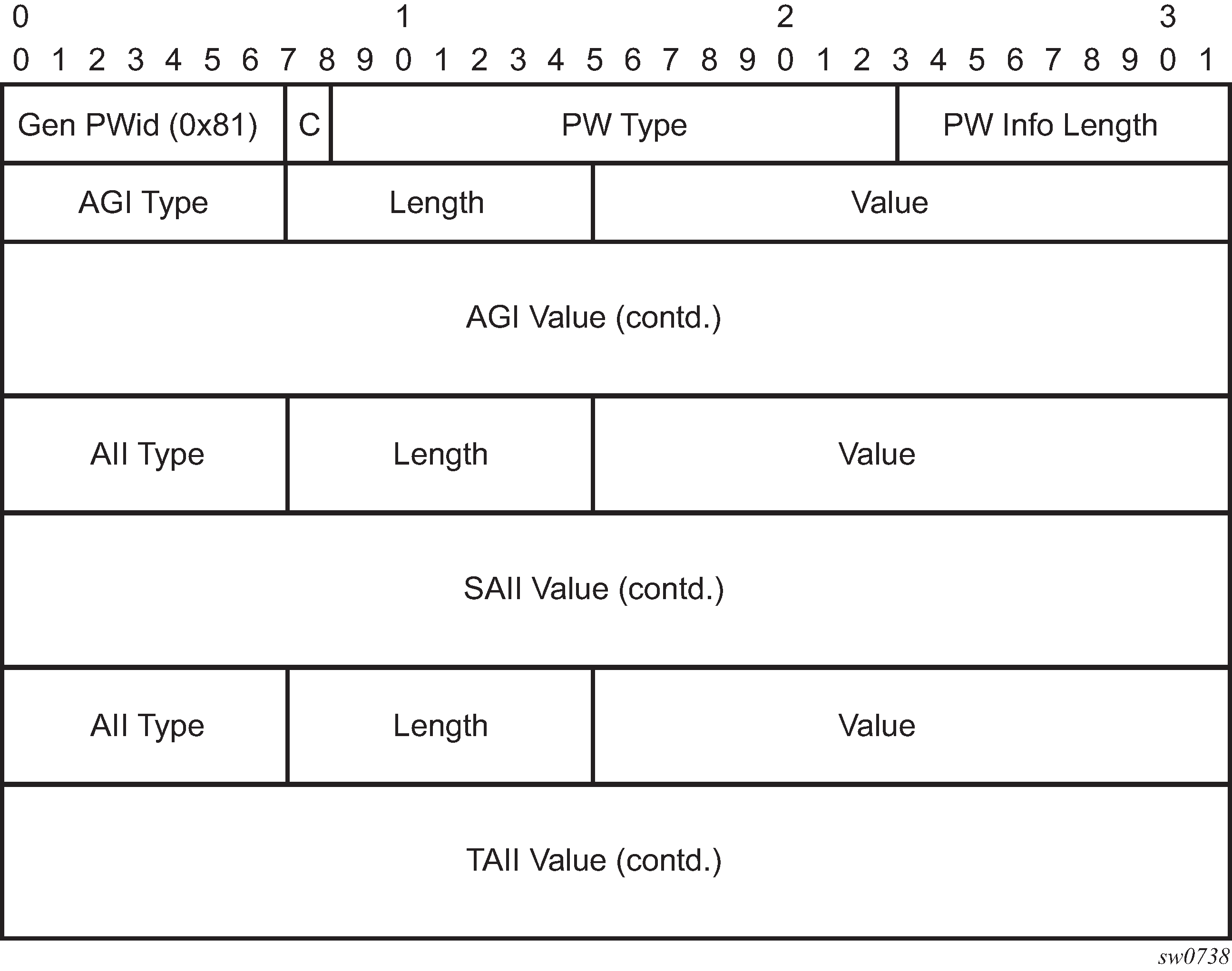Two LDP FEC elements are defined in RFC 4447, PW Setup & Maintenance Using LDP. The original pseudowire-ID FEC element 128 (0x80) employs a 32-bit field to identify the virtual circuit ID and it was used extensively in the initial VPWS and VPLS deployments. The simple format is easy to understand but it does not provide the required information model for BGP Auto-Discovery function. To support BGP AD and other new applications a new Layer 2 FEC element, the generalized FEC (0x81) is required.
The generalized pseudowire-ID FEC element has been designed for auto discovery applications. It provides a field, the address group identifier (AGI), that is used to signal the membership information from the VPLS-ID. Separate address fields are provided for the source and target address associated with the VPLS endpoints called the Source Attachment Individual Identifier (SAII) and respectively, Target Attachment Individual Identifier (TAII). These fields carry the VSI-ID values for the two instances that are to be connected through the signaled pseudowire.
The detailed format for FEC 129 is shown in the following figure.

Each of the FEC fields are designed as a sub-TLV equipped with its own type and length providing support for new applications. To accommodate the BGP AD information model the following FEC formats are used:
AGI (type 1) is identical in format and content with the BGP extended community attribute used to carry the VPLS-ID value.
Source AII (type 1) is a 4-byte value that carries the local VSI-id (outgoing NLRI minus the RD).
Target AII (type 1) is a 4-byte value that carries the remote VSI-ID (incoming NLRI minus the RD).